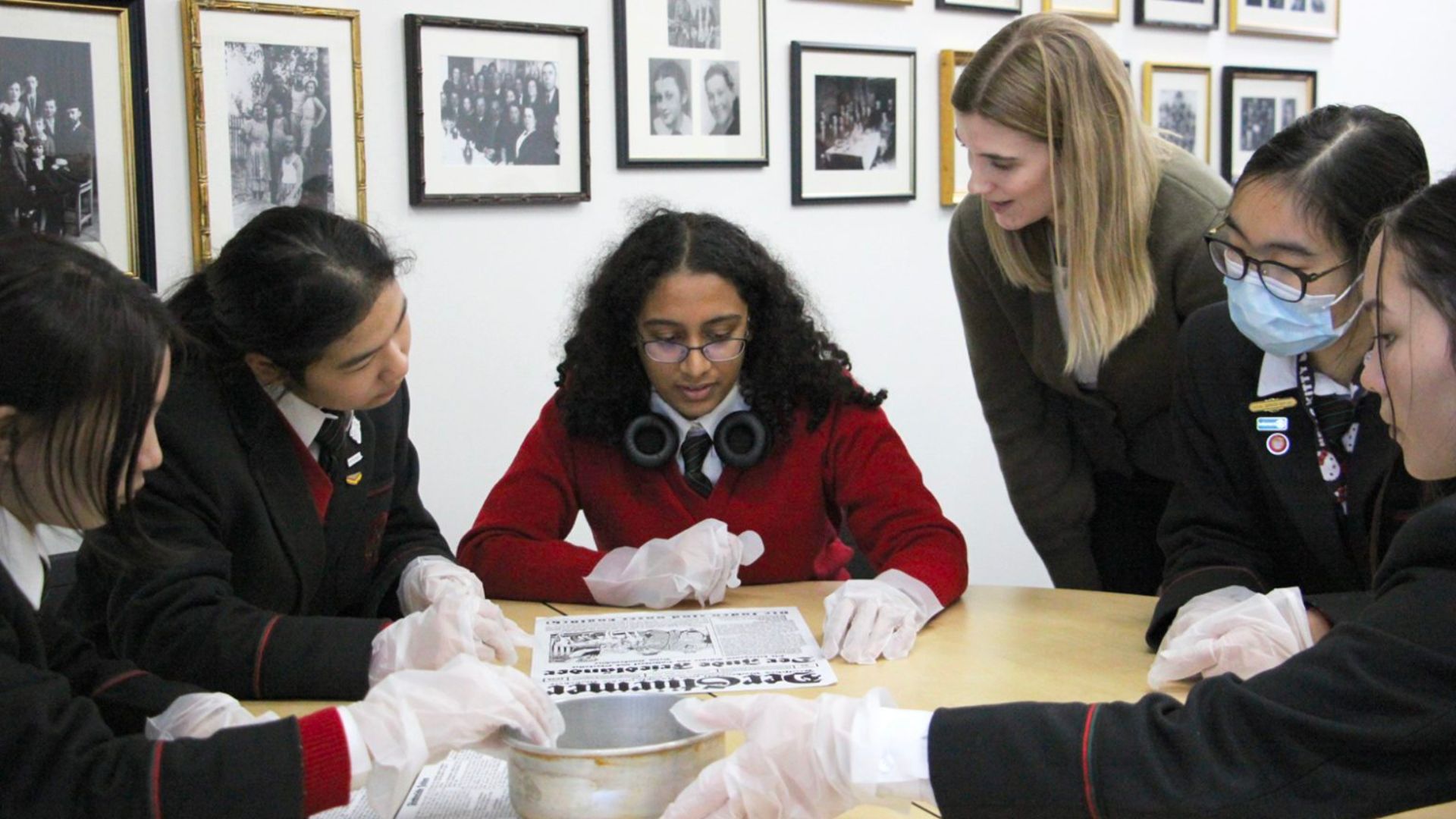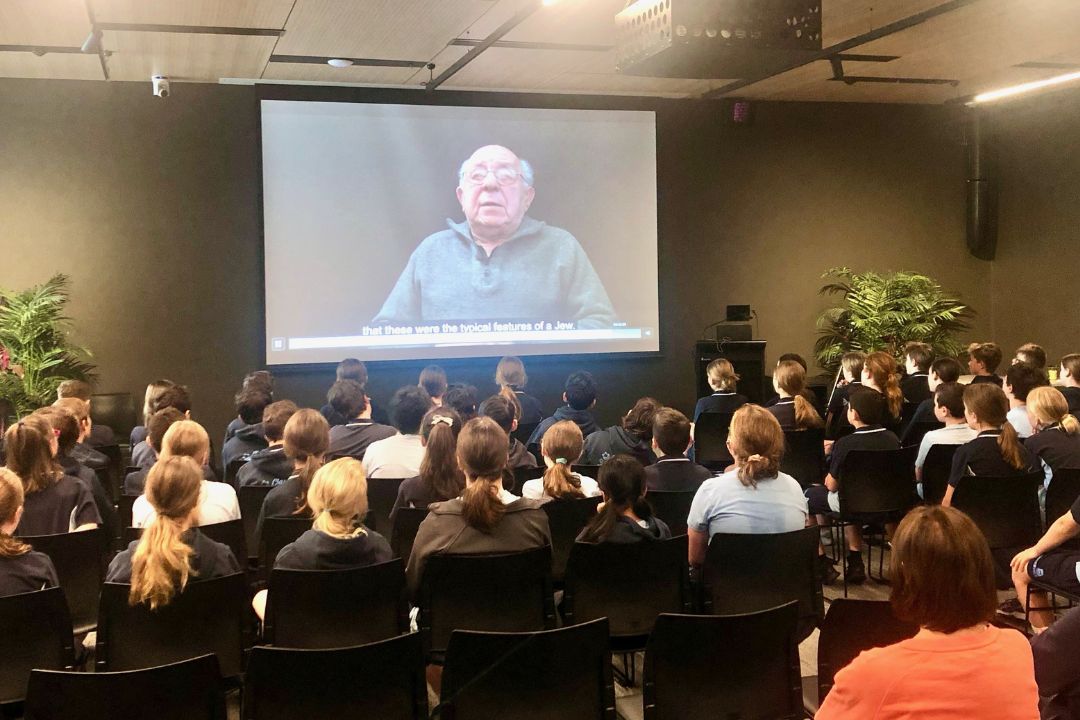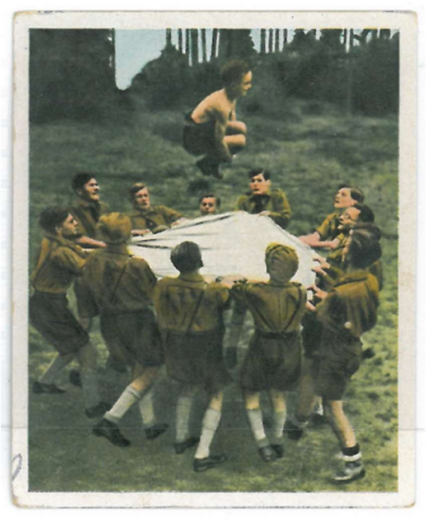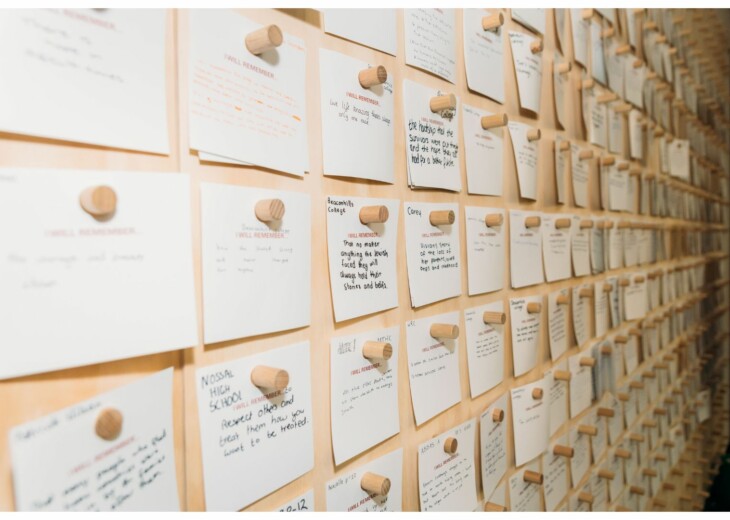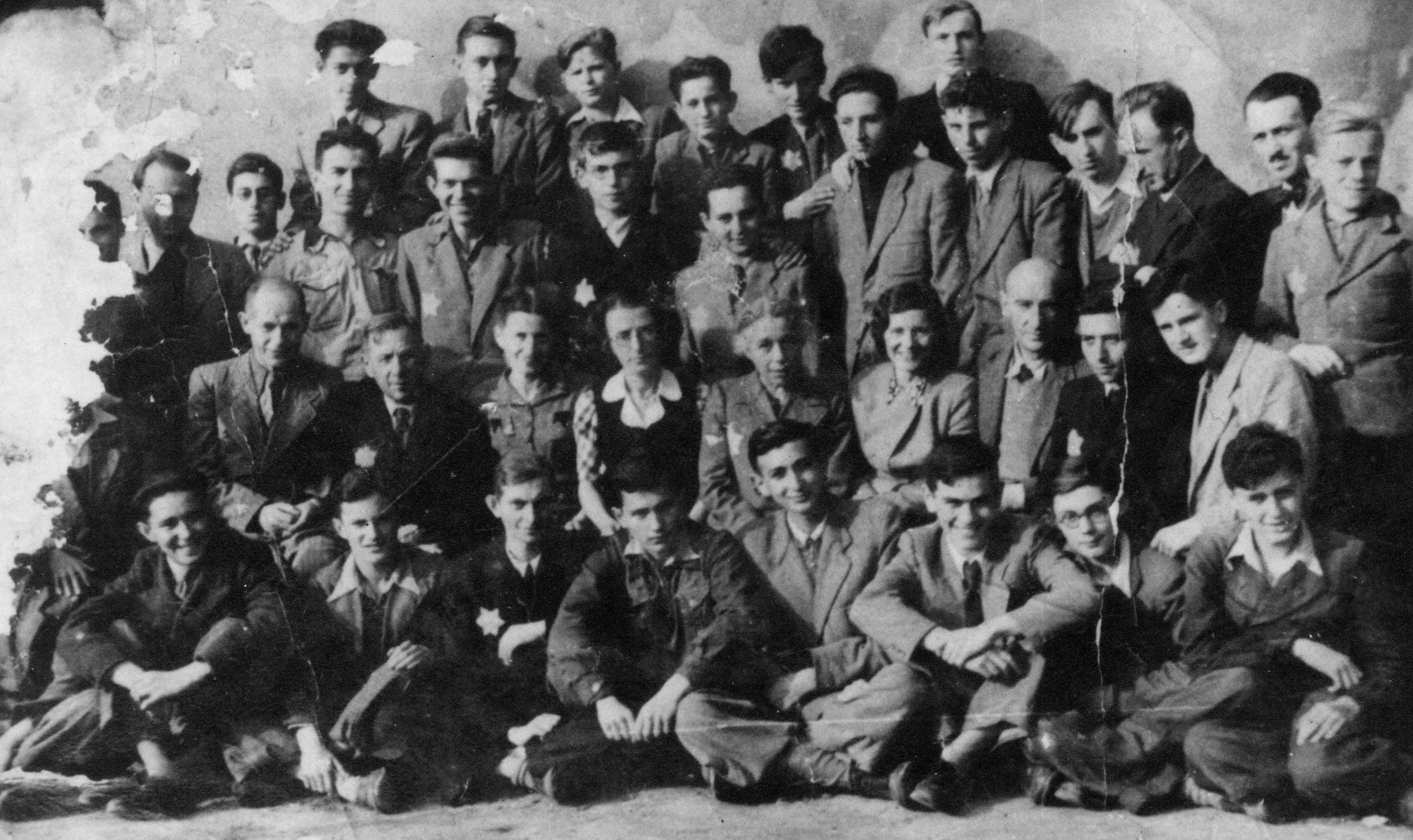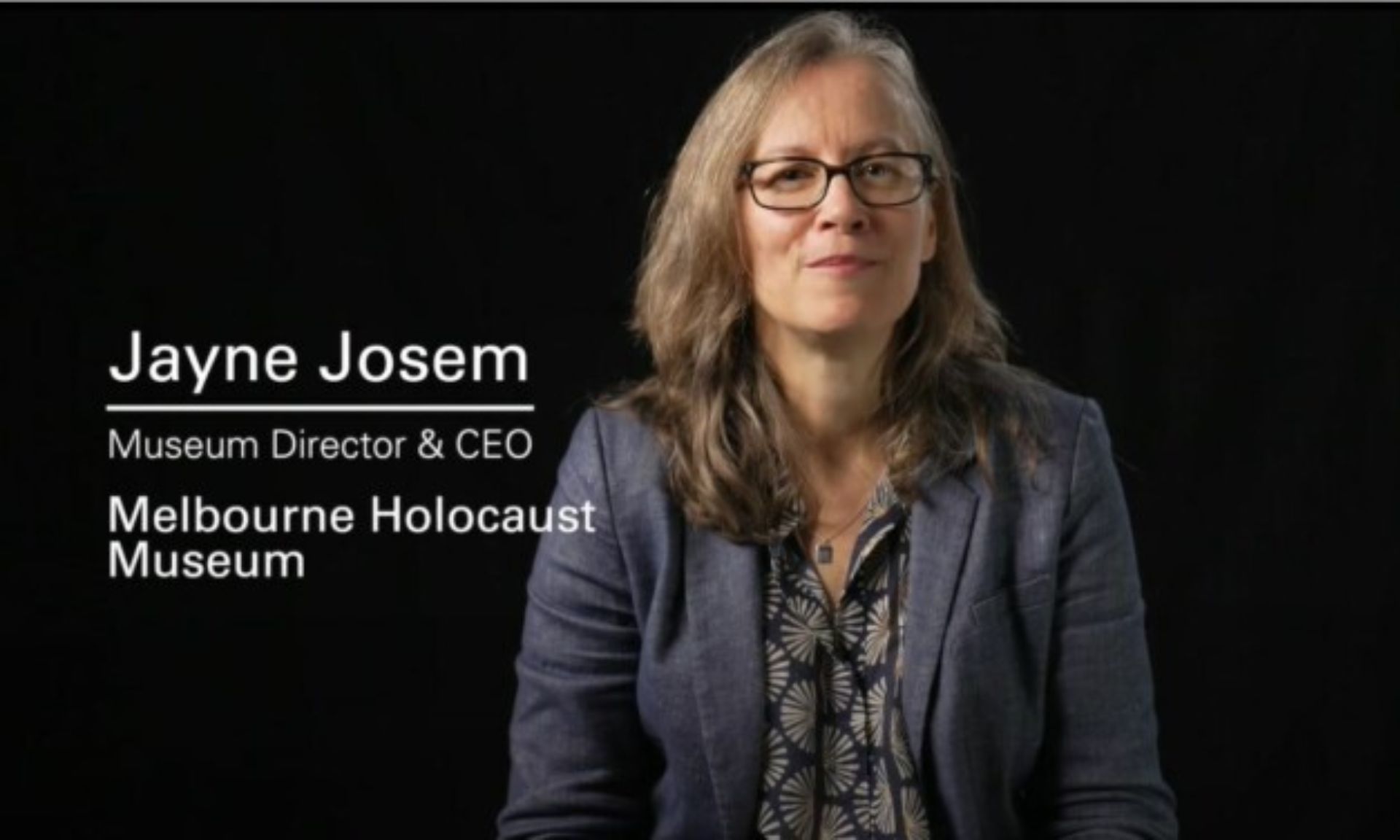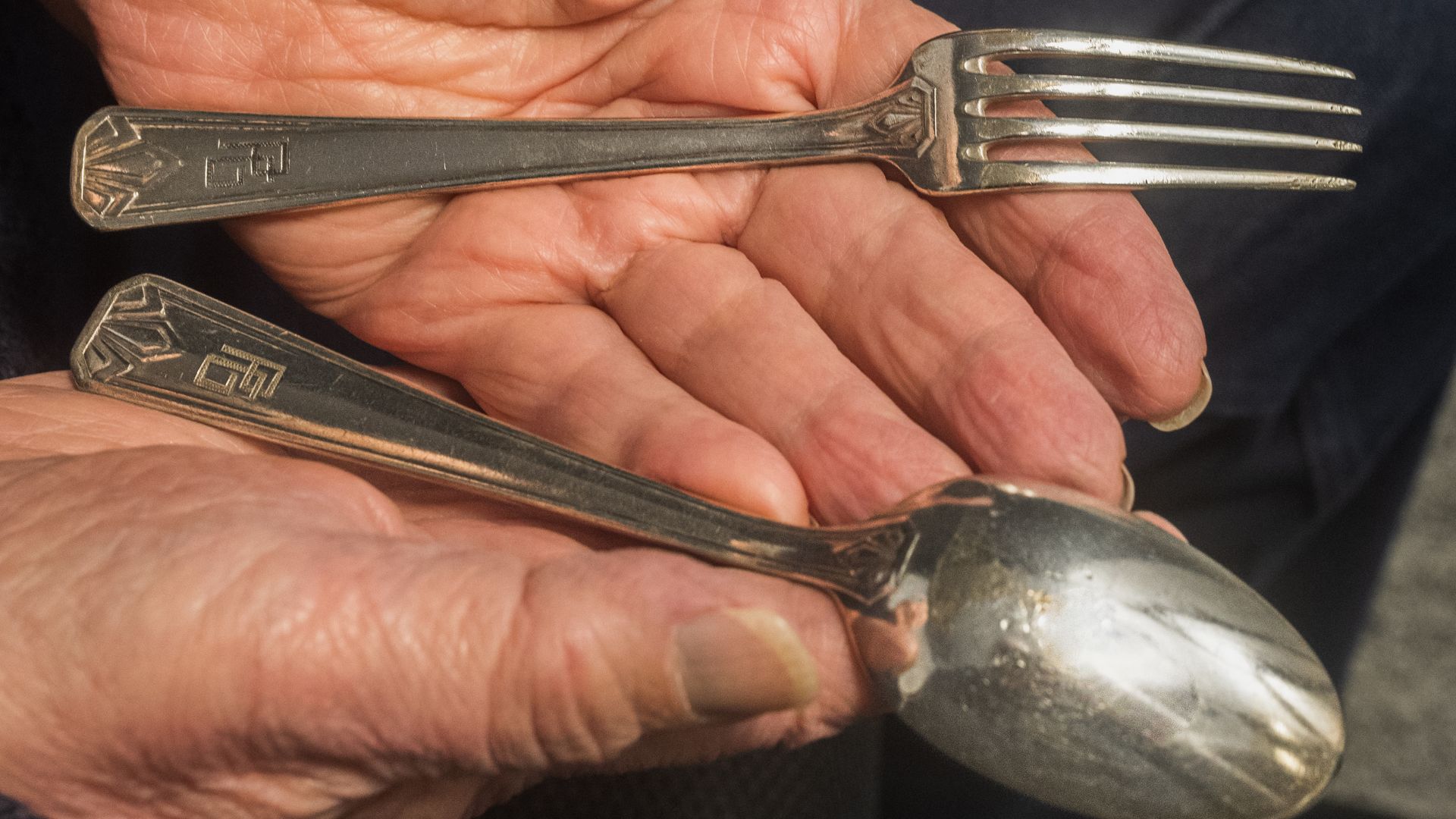Demonstrating the dangers of Propaganda
One of the most valuable tools in the propagation of genocide is misinformation or propaganda to fuel a ‘us’ vs. ‘them’ mentality. Once those persecuted are no longer seen as human in the eyes of the perpetrators, facilitating large-scale extermination operations comes to be seen as a duty rather than a crime against humanity.
With younger generations growing up in an environment of increasing misinformation, trusted sources are often overshadowed by attention-grabbing media that continually misrepresents the facts.
As a museum, our education programs are bolstered with a collection of over 20,000 historical artefacts and 1,400 Holocaust survivor testimonies.
This cigarette card, from the MHM collection, was produced in 1934 to celebrate one year of the government of Adolf Hitler. The slogan for the series this particular card was part of was, ‘The state of work and peace.’ These became so popular with young people that by 1934 around 250,000 albums were distributed monthly. The cards celebrated the achievements of Hitler, the Nazi party, and the German nation. Sometimes these albums were used by German teachers in classrooms as learning tools.
Using artefacts from our museum collection within our education programs provides students with tangible context to a complex theme. Knowing they can rely on the provenance and authenticity of these artefacts invokes a sense of trust in students and visitors to the museum. The reliability of these historical artefacts helps to unveil any misconceptions in the current climate and invites open discussion and reflection in a safe environment.
